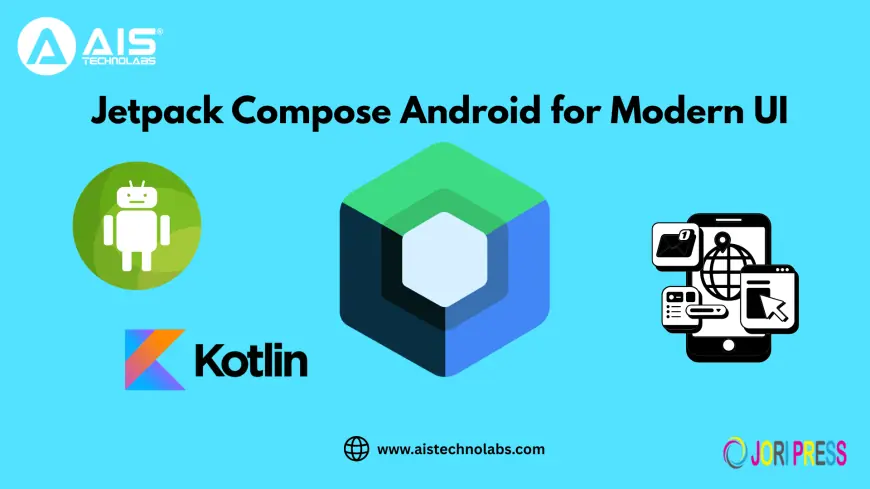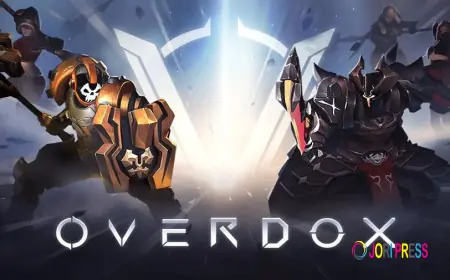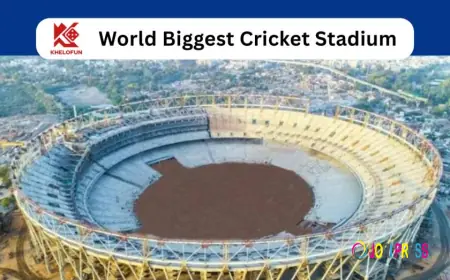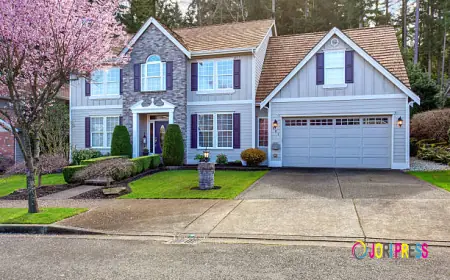Mastering Jetpack Compose Android for Modern UI Development
The entire article is a very friendly and human-readable guide, which guides you through understanding Jetpack Compose, providing reasons for its significance, and demonstrating its effect on UI development in Android, all without any real code.

If you are creating applications for Android at this point in time, you have likely come across Jetpack Compose Android. It is Google’s modern toolkit for UI creation, and gradually it is becoming the most preferred method for designing and developing screens for Android apps.
Jetpack Compose does not limit you to just avoiding XML files, adapters, and lots of boilerplate code; it also allows you to focus on screen visuals and behaviors. You just declare your UI; the tool will not only take care of rendering it but will update it any time a change occurs.
The entire article is a very friendly and human-readable guide, which guides you through understanding Jetpack Compose, providing reasons for its significance, and demonstrating its effect on UI development in Android, all without any real code.
What Is Jetpack Compose?
At a high level, Jetpack Compose is
-
A UI framework for Android that uses a declarative approach
-
The entire implementation is based on the Kotlin programming language.
-
A transition to the elimination of conventional XML layouts and numerous other old view patterns
The old method of creating the user interfaces for Android required rendering the layout in XML files that were later linked to either the Java or Kotlin code. Not only does it keep your navigation logic tidy, but it also allows you to avoid many of the old fragment issues, which can be especially helpful to beginners who are following any Android Compose tutorial.
In a way, Jetpack Compose makes you think differently:
-
You tell the UI what it should be like for a particular state.
-
UI gets automatically updated when the state changes.
-
The whole screen can be composed using Kotlin instead of XML.
Thus, instead of saying, "First of all, please create this view and then change its text if a certain condition occurs," you can simply state, "If the data is like this, the UI should be that way," and Jetpack Compose will automatically manage it.
This shift in mentality forms the core of any Android Jetpack Compose tutorial or Android Compose tutorial you explore, especially when you aim to Hire Android app developers.
Why Does Jetpack Compose Matter for Android UI Development?
There are several reasons why Jetpack Compose is such a big deal for Android UI development.
1. Reduction of boilerplate code and simpler structure
Classic Android applications were very often stuffed with the code of the "glue" type: adapters, view holders, long activity classes, and many XML files. Eventually, it becomes very difficult to manage and refactor the code.
With the support of Jetpack Compose:
-
Screens are presented as small and reusable UI functions.
-
You put together these blocks like Lego figures.
-
You code less to get the same result.
Even if you do not see the code, it is pretty easy to visualize the screen as a tree made up of small components: a header, a list item, a button row, a footer, etc. Jetpack Compose motivates and supports this modular structure.
2. Closer connection between UI and state
Compose is based on the principle that the user interface is an instantaneous representation of the app's current state. Whenever there is a change in the data, the UI will "recompose" itself and will only redraw the affected areas.
For instance:
-
The value of a counter is changed, and the new text is displayed on the screen
-
A network call is completed, and the loading button goes off
-
User authentication is done, and a different screen is presented by the app
Rather than having to communicate to the UI manually, "Please refresh," you only have to alter the state, and the UI will be in sync. This will eliminate the occurrence of bugs that are due to miscommunication among different parts of the system and will also clarify the situation in case of doubt.
Benefits of Kotlin Compose in Android
Kotlin Compose for Android development easier by allowing developers to create user interfaces, control states, and write business logic all in Kotlin—thus doing away with XML completely. Thanks to its declarative method, boilerplate is minimized, and the UI gets updated automatically when there are changes in the state, which results in faster development. Using live preview, component recollection, and Jetpack tightening, the team is reigning in clean and scalable applications.
Moreover, Compose aids newcomers in developer recruitment because everything is expressed in a single language. As a result, it facilitates working together, sharing ideas, and maintaining the project in the long run.
Key Benefits of Kotlin Compose
-
Single Language Workflow
Build UI, logic, and state management in pure Kotlin—no XML switching required.
-
Faster Development with Declarative UI
If there is any change in the state, make up the Compose with a lively UI!
-
Live Previews in Android Studio
Speeds up iteration and design changes.
-
Less Boilerplate Code
No findViewById() and fewer layout overhead tasks.
-
Reusable & Modular Composables
Encourages building scalable, maintainable UI blocks.
-
Better Tooling & Refactoring Performance
Android Studio works faster with unified Kotlin-based screens.
-
New Developer Friendly
Easy to read, understand, and onboard.
Material Design with Jetpack Compose
Google's Material Design library is a key player in Jetpack Compose. That also includes pre-assembled components like
-
Top app bars and navigation bars
-
Buttons, text fields, chips, and cards
-
Floating action buttons and snackbars
Moreover, you have access to a complete theming system:
-
Colors (light and dark themes)
-
Typography (headings, body text, labels)
-
Shapes (rounded corners, cut corners, etc.)
Rather than applying styles to each view you select, you accomplish it all by setting a theme and then applying it to the whole app. This not only makes it a complete and coherent design but also gives the flexibility to completely change the appearance of your app.
Any serious Android Jetpack Compose tutorial will spend time on theming because better theming allows you to easily scale your design by non-destructively redesigning just one screen at a time.
Lists, Navigation, and Real Apps in an Android Compose Tutorial
Simple screens won't suffice for real applications. To make such a build, the application might call for a list, navigation, and data fetching. Jetpack Compose provides tools for doing each and every one of these tasks.
-
Lists and scrolling content
Jetpack Compose unveiled lazy list components that correspond to RecyclerView in the traditional system. Components render only the items that are currently visible on the screen while reusing the ones that are already scrolled through. That is a requisite for the seamless performance of applications having a large volume of content displayed.
-
Navigation between screens
Jetpack Compose has its navigation library. Instead of managing fragment transactions, you describe screens and routes by means of Kotlin and then transition from one to another with simple function calls.
Not only does this keep your navigation logic tidy, but it also allows you to avoid many of the old fragment issues, which can be especially helpful to beginners who are following any Android Compose tutorial.
-
Data and ViewModels are closely related.
Jetpack Compose is fully compatible with ViewModels, which are part of Android's architecture components. The standard procedure is as follows:
-
A ViewModel makes available its internal state to the UI (for instance, it could be a list of items, loading flags, or error messages).
-
The UI listens to this state and refreshes itself immediately after it changes.
-
User interactions are passed back to the ViewModel, which once more modifies the state.
This cycle provides a clear and easily testable architecture for your application.
Android Jetpack Compose Tutorial Without Getting Overwhelmed.
Are you a beginner and new to Jetpack Compose? Understand it will take a while to get comfortable with the idea. Here is a straightforward and no-coding approach for learning:
-
Get acquainted with the fundamentals.
Read about the concept of declarative UI and its role in the Android ecosystem through Jetpack Compose.
-
Discover the primary building units.
Get familiar with the creative functions, state, layouts, and modifiers in a verbal first way. Form a mental model before being concerned about the syntax.
-
View the visual representations.
Many articles and videos present the flow of state and the construction of UI trees through diagrams. This is what these two give you without having to read any lines of code.
-
Attempt a systematic Android Jetpack Compose tutorial.
Opt for one or two top-rated tutorials or courses that are suitable for beginners and develop a simple app gradually.
-
Make a practice of redoing an already existing screen.
Visualize a simple screen of an old XML-based application that you are familiar with, and think of how it would appear in Jetpack Compose: What are the components? Where is the state? How is the list represented?
-
Create a little real project.
By the time the mental model is clear, the next step is to create a small side project that utilizes Compose for all screens. where the learning process really "clicks."
During the whole process, constantly remind yourself that Jetpack Compose simplifies Android UI development, although it may seem strange at first. The initial learning curve is an investment that results in faster development and cleaner apps.
Conclusion
Jetpack Compose has not simply changed Android UI development, but it has rather let the easier and cleaner declarative Kotlin code take over the complex XML and manual updating. The UI is automatically synchronized with the state, and any screen created from tiny, reusable components comes with the high-end layouts, animation, navigation, and complete theming still available.
If you are an Android developer, then Jetpack Compose should be your first choice. Start with Google’s official documentation, guided tutorials, beginner courses, and of course, practice. The more you practice, the faster and smoother you will be able to build maintainable apps. At AIS Technolabs, we also take this approach in delivering modern and high-performance Android solutions with the help of Jetpack Compose.
View Source- Mastering Jetpack Compose Android for Modern UI Development - ais technolabs
What's Your Reaction?
 Like
0
Like
0
 Dislike
0
Dislike
0
 Love
0
Love
0
 Funny
0
Funny
0
 Angry
0
Angry
0
 Sad
0
Sad
0
 Wow
0
Wow
0
















































